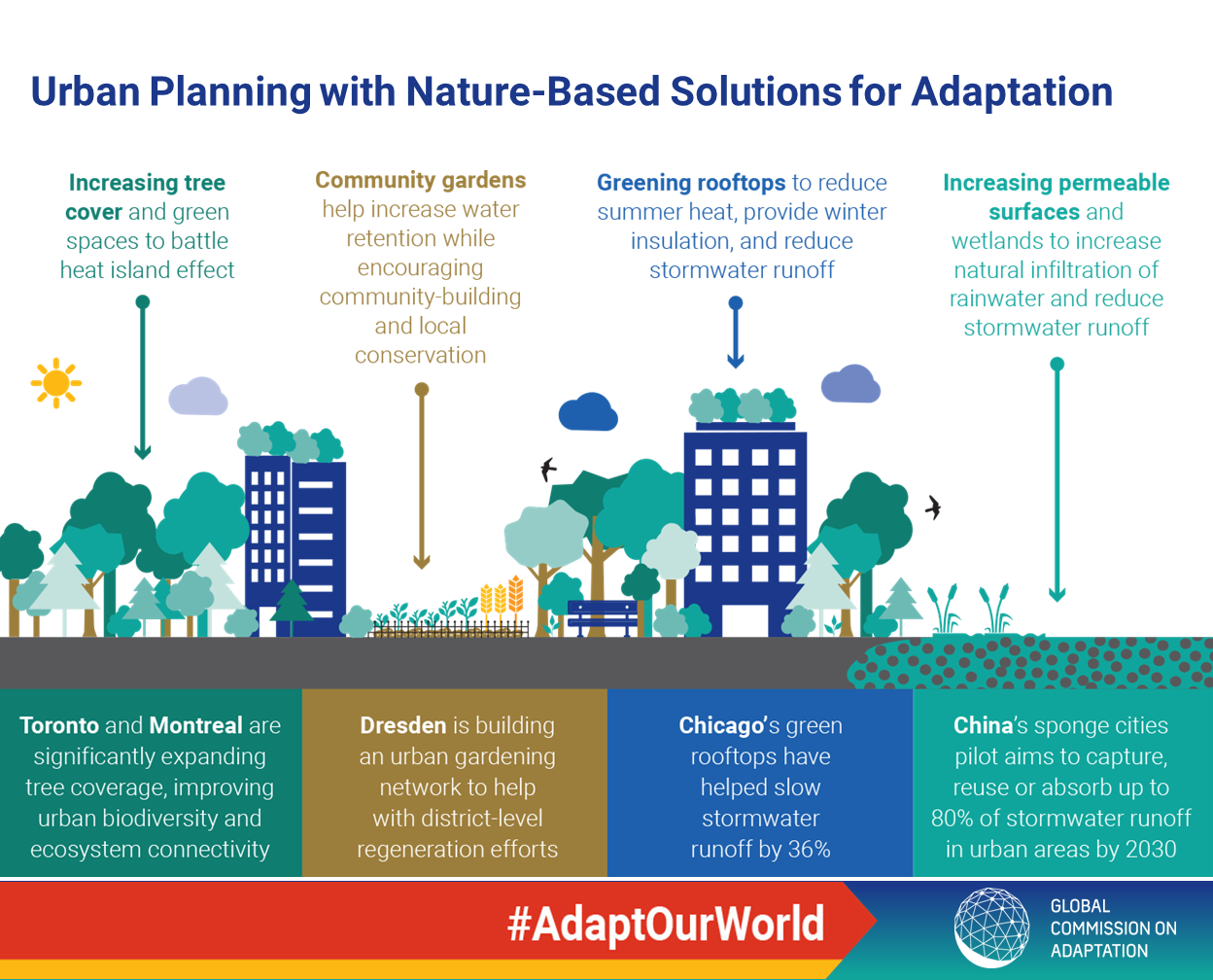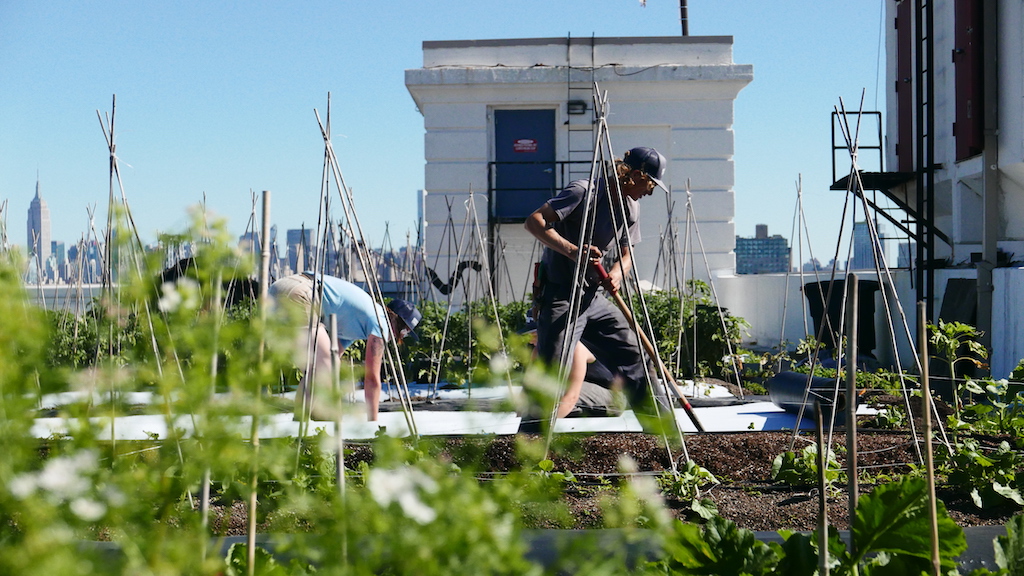The quirky weapons in an urban war against extreme heat
Some may like it hot, but cities around the globe are using a range of solutions – like white paint, roof-top gardens and water sprays – to stop people feeling the heat.
W
orkers in the Los Angeles Bureau of Street Services are painting the city’s roads – with a gooey, off-white substance infused with titanium dioxide.
The aim: to cool the city down. Los Angeles is especially susceptible to the “urban heat island” effect – cities tend to be hotter than nearby rural areas on sunny days. This is largely because they have so many dark-coloured surfaces, which absorb heat rather than reflect it. No less than 15 percent of the surface area of Los Angeles is tarmac.
Covering some of the tarmac with CoolSeal – that light-coloured goo, formulated to reflect the sun’s rays – should help to cool the city down. Workers are prioritizing neighbourhoods in most need, as urban heat can be a highly localized problem – when the temperature at the beach is in the mid-20s, for example, some suburbs can reach the high 30s.
This is just one among several ideas being experimented with around the world to mitigate the impacts of rising temperatures on cities. All have their pros and cons.
Cool streets
The scale of the Los Angeles initiative may be new, but the idea is not. Cost is the reason it has not yet been more widely put into practice – the Los Angeles project is reported to be costing USD 40,000 per mile, and will need to be renewed every seven years. There are also concerns that the glare could distract drivers, so products such as CoolSeal have tended to be used more commonly on car parks than highways.
A recent small-scale study also suggests that cool streets may have an unintended negative effect – by reflecting the sunshine, they can make pedestrians feel hotter even as they reduce the temperature underfoot.
Still, the technology has plenty of scope for further innovations: Los Angeles-based initiative Climate Resolve is experimenting with other solutions including acrylic paint, a ceramic spray and a cement composite.

Reflective roofs
Fewer concerns apply to roofs, where reflective products have been used more widely. Innovative products are using layers of silver, plastic and nanoparticles to increase the proportion of reflected light – although their more mirror-like effects could make them unsuitable for use on sloping roofs in drivers’ line of vision.
Even painting roofs with low-cost lime wash can have a significant cooling impact: whitewashed roofs remain close to the ambient temperature when neighbouring black roofs are hot enough to fry an egg. Projects from Ahmedabad to New York City are using both old and new technologies to make more roofs reflective.
Green roofs – and walls
While not quite as effective as cool roofs, green roofs also have a significant cooling effect. And roofs are not the only part of buildings that can be covered in vegetation. Singapore’s “Lush” policy (Landscaping for Urban Spaces and High-Rises) requires new buildings to include green areas, which could be roofs, balconies, or even walls. Buildings such as the Oasia Hotel have gone above and beyond the city’s regulatory requirements.

Image Rooftop gardens are one of the weapons in the fight against urban heat. Photo by Brooklyn Grange
Shade structures
Trees are an obvious and time-honoured way to create shade in cities, but they aren’t always the best solution – they can take years to grow, and shallow-rooted varieties can damage pavements. Artificial shading structures are an alternative, though they need to be carefully designed to avoid limiting airflow in ways that trap heat and pollution.
In some Arabian cities, narrow streets have traditionally been covered with date palm tree fronds to limit the sunlight. Tensioned fabric can be a relatively inexpensive alternative, suitable not only for streets but larger public areas such as parks and playgrounds.
Narrow streets with high-rise buildings can themselves constitute a form of shade structure. Masdar City, UAE, is attempting to apply these architectural lessons from the region’s past by creating streets that are more narrow and shaded.
Water sprays
Just as Los Angeles is cooler at the coast, all kinds of urban water features can have some impact in cooling the city. Chongqing is installing devices that spray mists of cool water over passengers waiting at bus stops. Japan has traditionally watered road surfaces before anticipated extreme heat – although this makes sense only if humidity is not so high that it will increase the heat stress on the urban population.
The ideas presented in this article aim to inspire adaptation action – they are the views of the author and do not necessarily reflect those of the Global Center on Adaptation.